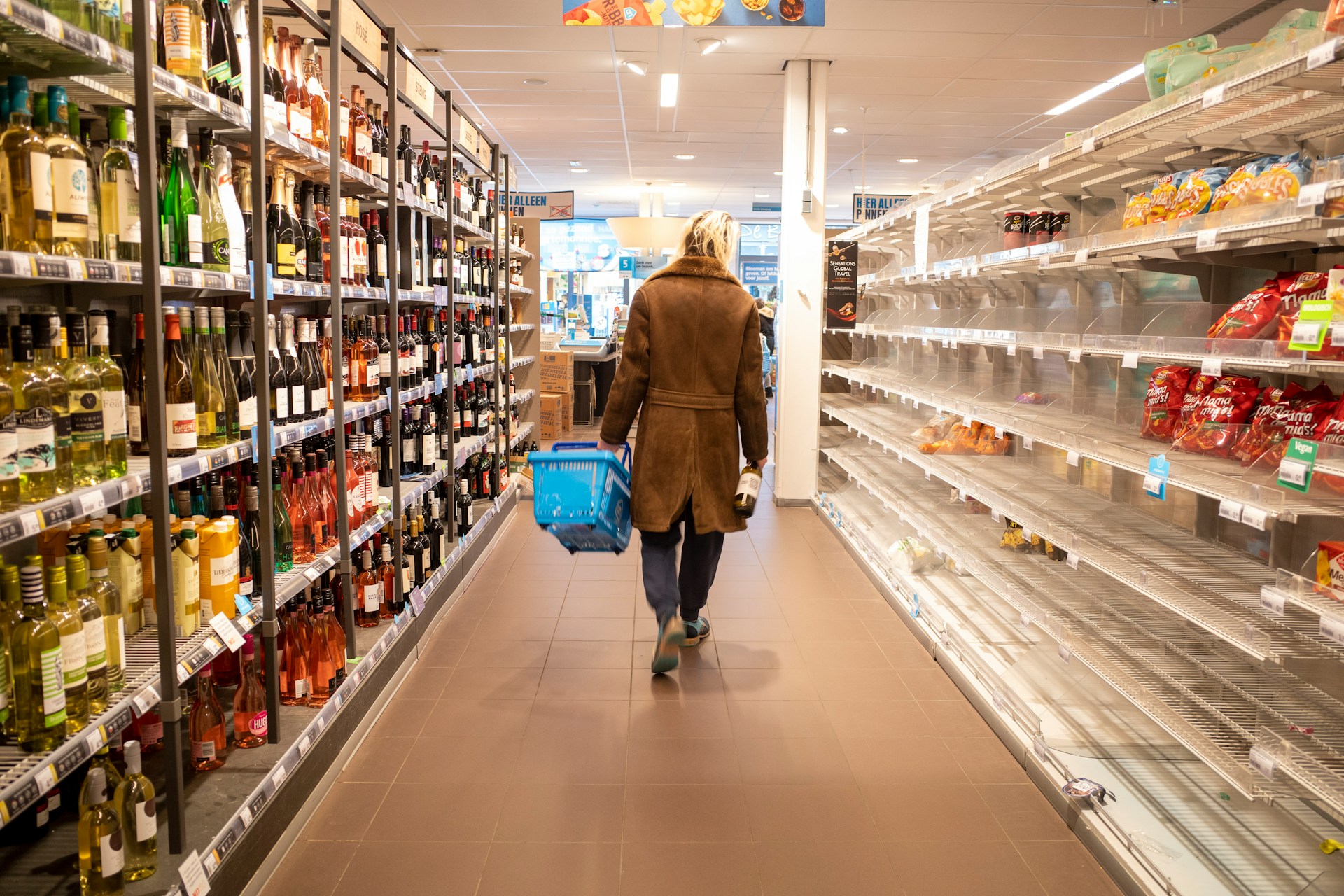
The Fascinating Benefits of Having an Automated Warehouse
March 8, 2022 - Emily Newton
Revolutionized is reader-supported. When you buy through links on our site, we may earn an affiliate commission. Learn more here.
Keeping up with emerging technologies is an effective way for brands to stay competitive. That’s likely why company decision-makers are increasingly embracing the automated warehouse concept. People thinking of doing the same should bear in mind that finding the right automation solutions for a facility won’t happen all at once.
Many people first invest in one or a few automation technologies to handle a few specific processes. They can ramp up from there if the early results they get seem worthwhile. Here are some of the ways that building an automated warehouse could help today’s companies.
Accelerate Delivery Times
Many consumers expect to get their items delivered in hours rather than days. Fortunately, if an e-commerce brand has an automated warehouse, it can achieve that aim.
Japanese brand Fast Retailing opened such a facility in Osaka. After restructuring its logistics network, the company began offering next-day delivery to the main islands of Honshu and Shikoku. Previously, getting items to those places took five days.
Fast Retailing also plans to expand its automation efforts into the Shanghai area soon. It already has a system whereby people can have items shipped to them or opt to pick the products up in stores. However, brand representatives say that building an automated warehouse there will help online orders reach shoppers even faster.
Kroger has also signaled that warehouse automation will be a major part of what helps the grocery retailer stay competitive in the United States. At one of the company’s automated fulfillment centers, there are more than 1,000 robots that take only minutes to finish grocery orders.
Each order-picking robot module can complete approximately 60 orders in only three minutes. Kroger executives hope that the significant robotics investments will help the company emerge as a strong competitor in the same-day delivery space.
Minimize Manual Processes and Increase Productivity
Many decision-makers become curious about automated warehouse options because they want to cut down on manual tasks. Those are often slower and more prone to errors than at least partially automated ones. Pursuing supply chain automation can free humans up for higher-value tasks while increasing order accuracy and output.
Walmart is one example of a leading retailer betting that an automated warehouse will cause substantial changes for the better in how the company handles products and orders. More specifically, high-speed robots will sort, store and retrieve products at the company’s distribution centers, replacing once-manual processes. The bots will also create store and item-specific pallets, making it easier for people to unload the products once they reach their destinations.
Pitman Creek Wholesale, which sells lures and tackles for sport fishing, also made major automation-related changes to its warehouse. The company’s sales had increased by 600% in only eight years. Thus, leaders examined how to help the brand cope with massive growth. Automation was part of the solution, including investing in a conveyor and sorting system.
John D. Johnson, the company’s general manager and chief operating officer, explained how the technology enabled doing things differently than the company did not long ago. “Yesterday, our pickers were picking product and then moving product. Today, our pickers pick, our packers pack, and our conveyor and sortation equipment moves the product,” he said, adding that automation brought a 400% improvement in receiving operations to putaway and a 250% outgoing production boost.
Increase Package-Handling Efficiency
The advantages of having an automated warehouse extend beyond retail and e-commerce fulfillment. Some logistics providers use advanced technologies to improve parcel handling in their facilities. One recent case saw DHL using a long robotic arm with a gripper to handle boxes and other items. That product also has a built-in feature that allows it to tell the difference between several types of packages.
The logistics brand chose Boston Dynamics to assist with this automated warehouse application. The tech provider set up the company with its Stretch robot. This is the first commercial job for that machine, which came on the market in early 2021. It will begin working in warehouses in the spring of 2021. Estimates suggest the robotic picker could handle up to 800 boxes every hour.
It’s too early to say how the bot might impact the human workforce. But, DHL executives hope the machine will make the company’s operations more scalable. Stretch has more than handling speed going for it. Since the base swivels and has wheels, it can move whatever part of the warehouse has a task to do. Plus, the low-profile build helps the machine work well in tight spaces.
UPS has also noticed the advantages of having an automated warehouse. The brand installed an automated storage and retrieval system at a European facility and began using it in May 2020. It includes robots, bins for items and stations for picking up and putting away packages.
If needed, UPS could also expand the system without disturbing ongoing operations. However, the setup already offers up to 400% more storage capacity than a traditional warehouse in the same space. Another impressive aspect of the location is that a system with 10 robots only uses as much energy as a vacuum cleaner.
Maximize Order Fulfillment Rates
When companies can achieve higher average order fulfillment rates, it’ll be easier for those businesses to meet increased customer demands and handle the order surges that can happen during a store’s busiest periods.
At a warehouse in the United Kingdom, pharmacy brand Boots ramped up for the 2019 Black Friday period by investing in cobots to assist workers with order fulfillment. The company estimated it would get six times the normal amount of online orders during this time.
Alan Penhale, the interim director of supply chain at Boots UK, said, “Our new cobot colleagues are ready to help with Black Friday, where we expect to pick around 3 million items over the two-week period. Our warehouse team absolutely love[s] the cobots — who have all been given names. They make the warehouse a calmer, more productive place and are also 2-3 times faster than manually pushing trolleys long distances, saving our teams from having to walk quite as far.”
Elsewhere, SportSpar GmbH is a German-based retailer specializing in overstock and clearance goods from major athletic brands. The internet was a significant part of why the company now operates in six countries. However, it recently became clear the brand could not cope with its growth without making some changes. It did so by getting a warehouse management system (WMS) that automates some fulfillment processes.
This development enabled a sixfold increase in the number of parcels shipped per day. The WMS provided benefits through route optimization during order picking and instructing workers to retrieve items for multiple items instead of one at a time. One of the company’s leaders also noted that the technology allowed the organization to expand the products it offers customers.
Reduce the Need for Human Involvement in an Automated Warehouse
When a company seeks to create an automated warehouse, that decision could minimize the company’s need for human employees. JD.com is an e-commerce retailer that has heavily invested in automation. Its approach helps show what’s possible.
In 2015, representatives from the company approached John Carlsson, an associate professor at the University of Southern California. They wanted to explore options for making their warehouses wholly unstaffed. Carlsson and his colleagues developed a system that halved storage costs, relied on robots for same-day delivery processing and allowed the company to handle 10 times the usual amount of orders.
Carlsson explained, “At any given instant you’ve got orders that need to be fulfilled in the warehouse, you’ve got robots on the floor, and you have to figure out which robot is going to go and pick up which item in the warehouse and drop it off at which station for processing.
He continued, “JD.com’s warehousing area is about 17 million square meters, distributed over about 700 warehouses, so that’s a lot of retail space to cover. Around 100 of their warehouses are now unmanned.”
The company also recently opened robotic shops in The Netherlands. These facilities operate as both product storage and order fulfillment centers. The customers who visit them start the process by scanning QR codes on their phones. From there, robots begin picking and sorting items to get people’s products. Soon, the products reach them via a conveyor. This process reportedly caused a 10% drop in prices for customers.
How Could an Automated Warehouse Help You?
These use cases illustrate how there are almost no limits regarding how someone might make an automated warehouse work for them. If you’re interested in doing the same, take the time to determine the most pressing obstacles dealt with in your facility. Then, look at technology options on the market and see whether some of them might solve some of them.
Revolutionized is reader-supported. When you buy through links on our site, we may earn an affiliate commission. Learn more here.
Author
Emily Newton
Emily Newton is a technology and industrial journalist and the Editor in Chief of Revolutionized. She manages the sites publishing schedule, SEO optimization and content strategy. Emily enjoys writing and researching articles about how technology is changing every industry. When she isn't working, Emily enjoys playing video games or curling up with a good book.







A very nice summary of interesting trends in the e-commerce automation field.
Stressing the fact that this changes improve the work place wellbeing and safety, all at once is never enough.